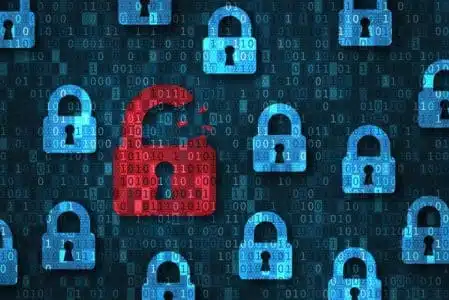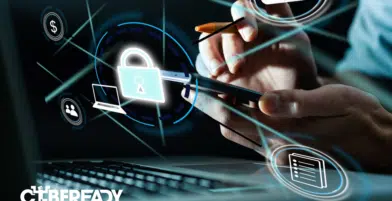The continuous nature of cyberattacks—phishing in particular—requires hands-on awareness training and experience. With the right program, employees can correctly identify and respond to such attacks. The problem is that traditional cybersecurity awareness training programs don’t provide the tools employees need to protect themselves or your organization from an attack. Sure, some employees can detect and protect themselves against phishing, but the key is to transform your entire organization’s overall security culture. To achieve this mindset, organizations need a phishing simulation software program that incorporates data-driven, simple phishing simulations. Follow our six best practices for phishing simulations to build employee engagement and improve their cyber resiliency.
6 Best practices for Phishing simulations
1. Provide Regular, Hands-on Training
 Traditional cybersecurity awareness programs are largely theoretical and occur at irregular intervals. Every so often, a company might inform employees about a type of cyberattack, how it works, and what to do about it. Although employees might learn the information as part of a long, one-and-done presentation followed by a quiz, they aren’t necessarily “trained” to react accordingly when a potential attack happens.
Traditional cybersecurity awareness programs are largely theoretical and occur at irregular intervals. Every so often, a company might inform employees about a type of cyberattack, how it works, and what to do about it. Although employees might learn the information as part of a long, one-and-done presentation followed by a quiz, they aren’t necessarily “trained” to react accordingly when a potential attack happens.
This approach to cybersecurity awareness training is not optimized for retention. Here’s why:
- It’s too broad; it focuses on cybersecurity in general, not specifically on phishing.
- It’s suitable only for employees who are visual or auditory learners, not for employees who require other methods of learning such as hands-on practice or repetition.
- The massive volume of information can overwhelm learners, inhibiting their ability to learn and understand it all.
- Training is not enough to teach employees how to be prepared for an actual phishing attack when it happens.
For a more effective strategy to phishing training, give employees regular, hands-on experiential training that teaches them how to recognize and respond to phishing emails. Through a regular practice that includes smaller bites of information and phishing simulation exercises, they become more efficient at identifying phishing attacks. This approach both improves their learning and enables them to apply their knowledge when they need to.
2. Integrate training in the workflow
Most phishing awareness training is separate from the real threat. As mentioned previously, employees might complete a training course one or a few times a year, separate from their daily workflow. However, their exposure to phishing threats occurs at various times and in different contexts.
Instead, provide employee phishing training right alongside the threat. This approach is critical as employees go through their email—the golden moment for you to provide timely, engaging, and effective phishing training content. With this just-in-time delivery, your employees are more likely to remember and apply the lessons when faced with a real phishing threat in the future.
By using a phishing simulation program, your organization can test employees on specific phishing attacks and then provide a detailed explanation of the technique to those who fall for the phishing attack. Employees are more likely to retain and learn from training when they are presented with information on a phishing technique that they had just fallen for.
3. Provide real-time feedback
Phishing awareness programs based on classroom learning don’t give real-time feedback to employees. When an employee clicks a phishing link one day and receives assigned remedial training weeks or months later, they miss the cause-and-effect relationship that drives behavioral changes.
To drive home the phishing awareness learning, adopt a phishing simulation program that provides real-time feedback to your employees. When an employee falls for a phishing email, this type of program immediately gives them additional training. As a result, they’re more likely to learn from their mistakes and make more effort to avoid falling for future attacks. This way, they aren’t punished with more training.
4. Analyze data to drive training
 One-size-fits-all phishing awareness training is ineffective at reaching those employees who represent a greater risk than others at falling for phishing scams. If your company trains all employees in the same way, you risk alienating employees who are competent at detecting phishing emails from your “serial clickers” who need more reinforced learning.
One-size-fits-all phishing awareness training is ineffective at reaching those employees who represent a greater risk than others at falling for phishing scams. If your company trains all employees in the same way, you risk alienating employees who are competent at detecting phishing emails from your “serial clickers” who need more reinforced learning.
To help identify employees who need more focused training, use data-driven simulated phishing software. During a simulated phishing campaign, your organization can collect behavioral analytics about how your employees respond to various threats.
At a high level, this approach provides your organization with insight into its serial clickers, who pose the greatest threat to your organization and might require more training and monitoring. This data also enables your organization to dig deeper into how employees in different roles or career stages vary in their response to phishing attacks. Based on this information, you can analyze the results of a phishing simulation to better refine your risk management and create a targeted “treatment plan” for different employee groups.
5. Set timely intervals and frequency
Although random intervals of phishing training campaigns are less predictable to employees, they serve only to “check the box” for training. Without the ability to control training frequency and intervals, your organization can’t effectively train your employees or manage your phishing risks.
Therefore, incorporate adjustable intervals and frequencies in your phishing simulations to tailor training to your employees’ unique levels of risk. For employees who consistently fall for phishing scams, you can schedule more frequent training intervals, so they get the repetition they need to drive behavioral changes. However, for employees who learn quickly from their mistakes, you can reduce training frequencies. Over-training fast learners only annoy them and reduce productivity with no added value.
6. Deliver continuous and customizable training
 While phishing attacks began with the Nigerian Prince scam, they have since become much more sophisticated. Modern phishing attacks are targeted and use advanced techniques and pretexts to maximize their probability of success. Therefore, every employee needs a basic level of phishing awareness to protect themselves against these attacks. However, giving employees a minimal level of competency and stopping there won’t do. And repeatedly sending the same phishing email is boring.
While phishing attacks began with the Nigerian Prince scam, they have since become much more sophisticated. Modern phishing attacks are targeted and use advanced techniques and pretexts to maximize their probability of success. Therefore, every employee needs a basic level of phishing awareness to protect themselves against these attacks. However, giving employees a minimal level of competency and stopping there won’t do. And repeatedly sending the same phishing email is boring.
Instead, tailor your phishing training to the unique ability of each employee. As employees master one level, advance their targeted phishing simulations to the next level, introducing them to more in-depth techniques and sophisticated pretexts. This approach helps improve your organization’s resiliency against phishing attacks and builds interest and engagement in your phishing awareness program. And trying to detect increasingly realistic and sophisticated phishing attacks creates more dynamic and interesting training.
The next generation of cybersecurity training programs
Traditional cybersecurity awareness programs are ineffective, leaving organizations vulnerable to phishing and other cyber threats. An effective phishing training program combines knowledge of cybersecurity, sociology, and psychology, which is a combination that off-the-shelf or in-house cybersecurity awareness training programs lack.
To apply these six approaches in your phishing training, you just need the right phishing simulation software. CybeReady offers the only autonomous phishing simulation software for enterprises that combines all six of the approaches described in this post. With our award-winning solution, you’ll change employee behavior toward phishing attacks, eliminate IT overhead, and reduce the total cost of ownership.













